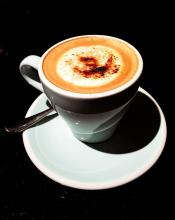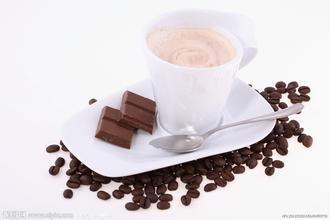The country profile of C ô te d'Ivoire affects the growth of the coffee industry in the country
(I) popular Front of C ô te d'Ivoire (Front Populaire Ivoirien): PFDJ for short. The ruling party. It was officially founded by incumbent President Laurent Gbagbo in France in March 1983. At present, there are about 800000 party members, and the backbone are intellectuals and young students. It has a great influence in the central and western regions dominated by the Crux nationality and the capital Abidjan. We advocate equality, freedom, justice and multi-party democracy, and the goal is to establish a democratic system in which everyone is equal and to implement socialism. In February 1992, a large-scale demonstration was organized, which was suppressed by the government and announced that it would abandon the violent struggle and seize power peacefully through elections. Participated in the transitional government after a military coup in December 1999. In October 2000, Gbagbo, the party's presidential candidate, won the general election. In the 2001 parliamentary elections, PFDJ accounted for 96 seats, making it the second largest party in Parliament. Has a close relationship with the French Socialist Party. Chairman Afei N'Guessan (Affi N'Guessan), General Secretary Ureto Sylvain Miaka (Oureto Sylvain Miaka).
(2) Democratic Party of C ô te d'Ivoire (Parti D é mocratique de C te d'Ivoire): participating party. Founded on April 30, 1946, founded by Felix Houphou é-Boigny, the first president of the country, it is the earliest political party in the country. It has a great influence in the central and eastern regions dominated by Arkans, especially in Yamoussoukro and Bouak é. The slogan is peace, freedom, pragmatism, openness and dialogue, advocating national unity through "dialogue" and "reconciliation" at home, and establishing a new international political and economic order on the basis of justice through "dialogue" and "peace" to the outside world. He was in power for a long time for nearly 40 years from independence to the military coup at the end of 1999. It is now the largest party in the National Assembly, accounting for 98 seats. Chairman Henry Conan Bedie (Henri Konan B é di é), General Secretary Alphonse Marty Jay (Alphonse Mady DJ é DJ é).
In terms of quantity, it is one of the largest producers in the world.
C ô te d'Ivoire te d'lvoire has never produced the best quality coffee, and it rarely comes from Arabian coffee trees. In the early 1980s, it was the world's third-largest coffee producer, with an annual output of 5 million bags. Even today, it is still the fifth largest coffee producer in the world, with an annual output of 4.4 million bags. In terms of coffee production, C ô te d'Ivoire is second only to Indonesia (6.8 million bags per year).
In the 1980s Ivorian coffee produced only 250 kilograms per hectare. This is partly due to poverty, but also to the aging of coffee trees. Lack of investment and lack of long-term business plans have also affected coffee production.
The Government of C ô te d'Ivoire has begun to take positive measures to reverse the situation. The National Coffee Management Committee has been reorganized and streamlined, and some production activities have been transferred to private companies for management. The government provides a minimum price guarantee to farmers who produce high-quality coffee and encourages exporters to buy directly from farmers. Today, 80% of exported coffee has found a market in European Community countries, with the main buyers being France and Italy.
It is worth noting that C ô te d'Ivoire is the main center of coffee smuggling, with as many as 2600 tons of coffee smuggled between 1993 and 1994, mainly through neighboring countries Mali and Guinea.

Important Notice :
前街咖啡 FrontStreet Coffee has moved to new addredd:
FrontStreet Coffee Address: 315,Donghua East Road,GuangZhou
Tel:020 38364473
- Prev

Tazira San Cristobal Manor in the southwest of the Venezuelan coffee plantation
The best coffee names in Venezuela are: Montebello in San Cristobal (San Cristbal de Tachira) in Tazira, Miramar in Rubio (Rubio de Tachira) in Tazira, Granija in Timothe (Timote de Merida) in Merida, and Santa Ana in Tacira (San)
- Next

Varieties of coffee trees in coffee producing areas of St. Helena
Coffee is always inextricably related to history, wind and wind, and great men. St. Helena is famous for Napoleon. St. Helena coffee is very desirable because of Napoleon. Unfortunately, this kind of coffee always makes people feel mysterious. What kind of taste is Napoleon so praised? Not everyone has a chance to taste it. Coffee that has tasted a lot of gourmet coffee
Related
- Does Rose Summer choose Blue, Green or Red? Detailed explanation of Rose Summer Coffee plots and Classification in Panamanian Jade Manor
- What is the difference between the origin, producing area, processing plant, cooperative and manor of coffee beans?
- How fine does the espresso powder fit? how to grind the espresso?
- Sca coffee roasting degree color card coffee roasting degree 8 roasting color values what do you mean?
- The practice of lattes: how to make lattes at home
- Introduction to Indonesian Fine Coffee beans-- Java Coffee producing area of Indonesian Arabica Coffee
- How much will the flavor of light and medium roasted rose summer be expressed? What baking level is rose summer suitable for?
- Introduction to the characteristics of washing, sun-drying or wet-planing coffee commonly used in Mantenin, Indonesia
- Price characteristics of Arabica Coffee Bean Starbucks introduction to Manning Coffee Bean Taste producing area Variety Manor
- What is the authentic Yega flavor? What are the flavor characteristics of the really excellent Yejasuffi coffee beans?

